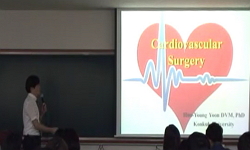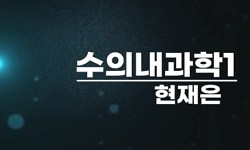This research is about symbolism of costume based on Rite of Passage from birth to death. The content is about collected materials and data from the late 1700's to mid 1950's accumulated throughout the country survey from 1970's to present, 2004. '...
http://chineseinput.net/에서 pinyin(병음)방식으로 중국어를 변환할 수 있습니다.
변환된 중국어를 복사하여 사용하시면 됩니다.
- 中文 을 입력하시려면 zhongwen을 입력하시고 space를누르시면됩니다.
- 北京 을 입력하시려면 beijing을 입력하시고 space를 누르시면 됩니다.
https://www.riss.kr/link?id=A76250454
- 저자
- 발행기관
- 학술지명
- 권호사항
-
발행연도
2005
-
작성언어
Korean
- 주제어
-
등재정보
KCI등재
-
자료형태
학술저널
- 발행기관 URL
-
수록면
425-444(20쪽)
-
KCI 피인용횟수
3
- 제공처
- 소장기관
-
0
상세조회 -
0
다운로드
부가정보
다국어 초록 (Multilingual Abstract)
'Rite of Passage' means the big etiquette (or rite) of a person's life from birth to death, and 'Costume for the rite of passage' means the costume worn by a person. Here, every occasion or situation holds expressive purpose of pleasure and sorrow, moreover each holds distinctive characteristics.
The birth of a baby and it's rite were not prominently noticeable because of Confucianism's 'worship of ancestry', however, fulfilled as the most valuable weapon of desire as 'preservation of the race and prosperity of the family'. Accordingly, from the garment of pregnancy, delivery of a baby, hundred days feast to first birthday, the expectation and symbolism were apparent and huge. Right after the birth of a baby, 'Podaegi(blanket)' was used to hold a baby for two nights, then on the morning of third day, a baby wore a clothes made with used top of men of longevity, wealth and honor, as the first garment. It was worn for 21 days, though, generally worn until the hundred days feast. The first garment was treasured as a lucky charm to be considered as "good fortune to carry with for exam, war, trial or gamble". For the hundred days feast, 'hundred lines quilted garment' made of white fabric symbolizing longevity, was worn. Women's clothes was not used for the this garment because it was considered as taboo, weak spirited, and preventing success.
Since the wedding ceremony was the most celebrated occasion of lifetime, both groom and bride were treated as the nobility wearing government official's outfits and ceremonial costume.
For the death, two prominently different form of outfits show clothing style of the living and death. The death wore shroud made of the best quality fabric as for wedding. The living considered as offender wore funeral garment made of the roughest hemp cloth. Especially, the funeral garment was divided in five grades, relation wise closest to the death wore the roughest. When a father passed away, expressed as 'The heaven collapsed", the roughest fabric and stitches were used.
Based on folklore research, a widening gap between the rich and poor or all social standings did not exist for rite of passage and costume. Thus, had wishing desire for splendor of wealth and honor, longevity in common. To achieve these, constructive conduct was held as incantation and predominance of men over women phenomenon.
From now on, based on these research. relics and literary document will be supplemented and analyzed as an assignment.
This research is about symbolism of costume based on Rite of Passage from birth to death. The content is about collected materials and data from the late 1700's to mid 1950's accumulated throughout the country survey from 1970's to present, 2004.
'Rite of Passage' means the big etiquette (or rite) of a person's life from birth to death, and 'Costume for the rite of passage' means the costume worn by a person. Here, every occasion or situation holds expressive purpose of pleasure and sorrow, moreover each holds distinctive characteristics.
The birth of a baby and it's rite were not prominently noticeable because of Confucianism's 'worship of ancestry', however, fulfilled as the most valuable weapon of desire as 'preservation of the race and prosperity of the family'. Accordingly, from the garment of pregnancy, delivery of a baby, hundred days feast to first birthday, the expectation and symbolism were apparent and huge. Right after the birth of a baby, 'Podaegi(blanket)' was used to hold a baby for two nights, then on the morning of third day, a baby wore a clothes made with used top of men of longevity, wealth and honor, as the first garment. It was worn for 21 days, though, generally worn until the hundred days feast. The first garment was treasured as a lucky charm to be considered as "good fortune to carry with for exam, war, trial or gamble". For the hundred days feast, 'hundred lines quilted garment' made of white fabric symbolizing longevity, was worn. Women's clothes was not used for the this garment because it was considered as taboo, weak spirited, and preventing success.
Since the wedding ceremony was the most celebrated occasion of lifetime, both groom and bride were treated as the nobility wearing government official's outfits and ceremonial costume.
For the death, two prominently different form of outfits show clothing style of the living and death. The death wore shroud made of the best quality fabric as for wedding. The living considered as offender wore funeral garment made of the roughest hemp cloth. Especially, the funeral garment was divided in five grades, relation wise closest to the death wore the roughest. When a father passed away, expressed as 'The heaven collapsed", the roughest fabric and stitches were used.
Based on folklore research, a widening gap between the rich and poor or all social standings did not exist for rite of passage and costume. Thus, had wishing desire for splendor of wealth and honor, longevity in common. To achieve these, constructive conduct was held as incantation and predominance of men over women phenomenon.
From now on, based on these research. relics and literary document will be supplemented and analyzed as an assignment.
참고문헌 (Reference)
1 "한국민속종합조사보고서 제주도편" 1974
2 "한국민속종합조사보고서 제1~12책" 1969~1981
3 "한국민속종합조사보고서 제17책 의생활편" 1986
4 "한국민속종합조사보고서 북한편" 1991
5 "제주지방의 의생활 한국민속조사보고서 제17책" 1986
6 "의생활사,포천군의 역사와 문화유적" 1998
7 "의생활 한국민속종합조사보고서 제주도편" 문화공보부 문화재관리국 1974
8 "의생활 풍습 大田市史 제3권" 대전직할시사편찬위원회 1992
9 "의생활 일산 새도시 개발지역 학술조사보고" 한국선사문화연구소경기도단국대학교 한국민족학연구소 1992
10 "의생활 수원시사 中" 수원시사편찬위원회 1997
1 "한국민속종합조사보고서 제주도편" 1974
2 "한국민속종합조사보고서 제1~12책" 1969~1981
3 "한국민속종합조사보고서 제17책 의생활편" 1986
4 "한국민속종합조사보고서 북한편" 1991
5 "제주지방의 의생활 한국민속조사보고서 제17책" 1986
6 "의생활사,포천군의 역사와 문화유적" 1998
7 "의생활 한국민속종합조사보고서 제주도편" 문화공보부 문화재관리국 1974
8 "의생활 풍습 大田市史 제3권" 대전직할시사편찬위원회 1992
9 "의생활 일산 새도시 개발지역 학술조사보고" 한국선사문화연구소경기도단국대학교 한국민족학연구소 1992
10 "의생활 수원시사 中" 수원시사편찬위원회 1997
11 "의생활 민속 錦江誌 下卷" 한남대 충청문화연구소忠淸南道 1993
12 "의생활 果川鄕土史 下卷" 과천문화원 1993
13 "의생활" 남양주시지 편찬위원회 제3권 : 2000
14 "유성의 의생활 유성의 전통과 문화" 대전광역시유성구 제3권 : 1998
15 "우리나라 婚禮服의 民俗學的 硏究 韓國服飾 제7호" 단국대학교 석주선기념민속박물관 1989
16 "안성사람의 의생활" 안성시단국대학교 중앙박물관 1999
17 "복식과 의생활" 連川郡誌編纂委員會 2000
18 "경기민속지 Ⅳ" 의식주편 2001
19 "濟州島民의 호상옷과 來世觀 濟州島硏究 제1집" 濟州島硏究會 1984
20 "濟州島民의 喪禮에 나타난 服飾 硏究 濟州島硏究 제2집" 濟州島硏究會 1985
21 "濟州島民의 初生兒服과 그에 나타난 意識 문화재 제21호" 문화재관리국 (제21호) : 1988
22 "濟州島 通過儀禮服의 硏究" 단국대학교 대학원 사학과 석사학위논문 1980
23 "濟州島 衣生活의 民俗學的 硏究" 서울여자대학교 박사학위논문 1994
24 "濟州島 服飾의 民俗學的 硏究" 이화여자대학교 교육대학원 석사학위논문 1971
25 "新婦치레와 그에 나타난 민속 韓承鎬 牧師 古稀紀念 論文集" 한승호목사 고희기념논문 편집위원회 1991
26 "慶尙道의 衣生活" 경상북도경상북도칠백년사편찬위원회 3권 : 1999
동일학술지(권/호) 다른 논문
-
- 비교민속학회
- 편집부(편집자)
- 2005
- KCI등재
-
- 비교민속학회
- 편집부(편집자)
- 2005
- KCI등재
-
- 비교민속학회
- 최길성(Choi Kil-Seong)
- 2005
- KCI등재
-
- 비교민속학회
- 편무영(Pyeon Moo-Yeong)
- 2005
- KCI등재
분석정보
인용정보 인용지수 설명보기
학술지 이력
| 연월일 | 이력구분 | 이력상세 | 등재구분 |
|---|---|---|---|
| 2027 | 평가예정 | 재인증평가 신청대상 (재인증) | |
| 2021-01-01 | 평가 | 등재학술지 유지 (재인증) |  |
| 2018-01-01 | 평가 | 등재학술지 유지 (등재유지) |  |
| 2015-01-01 | 평가 | 등재학술지 유지 (등재유지) |  |
| 2011-01-01 | 평가 | 등재학술지 유지 (등재유지) |  |
| 2009-01-01 | 평가 | 등재학술지 유지 (등재유지) |  |
| 2007-01-01 | 평가 | 등재학술지 유지 (등재유지) |  |
| 2004-01-01 | 평가 | 등재학술지 선정 (등재후보2차) |  |
| 2003-01-01 | 평가 | 등재후보 1차 PASS (등재후보1차) |  |
| 2001-07-01 | 평가 | 등재후보학술지 선정 (신규평가) |  |
학술지 인용정보
| 기준연도 | WOS-KCI 통합IF(2년) | KCIF(2년) | KCIF(3년) |
|---|---|---|---|
| 2016 | 0.39 | 0.39 | 0.42 |
| KCIF(4년) | KCIF(5년) | 중심성지수(3년) | 즉시성지수 |
| 0.46 | 0.44 | 0.796 | 0 |




 DBpia
DBpia







